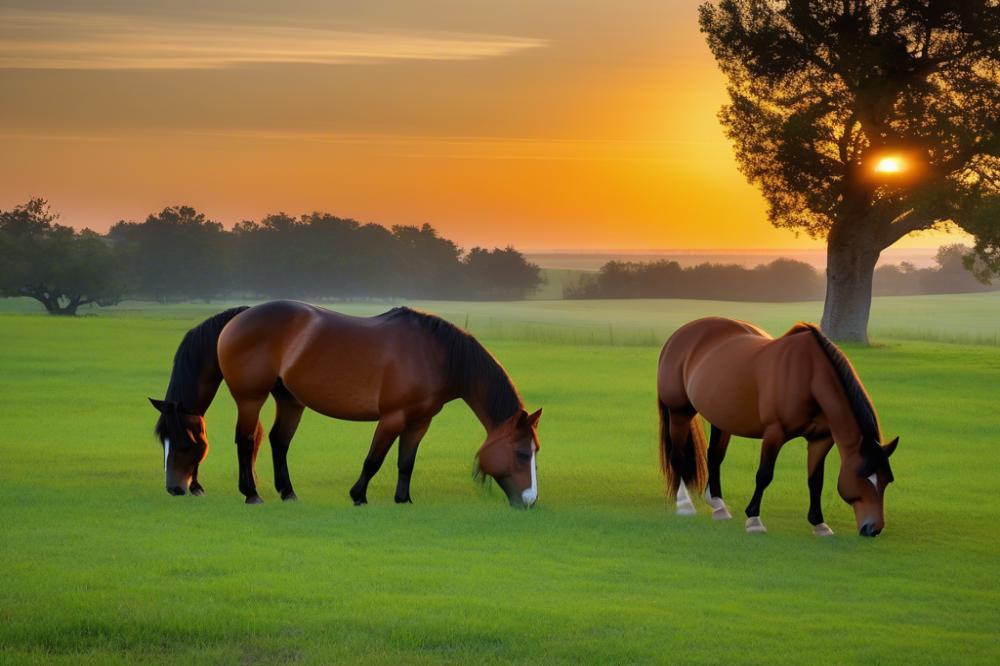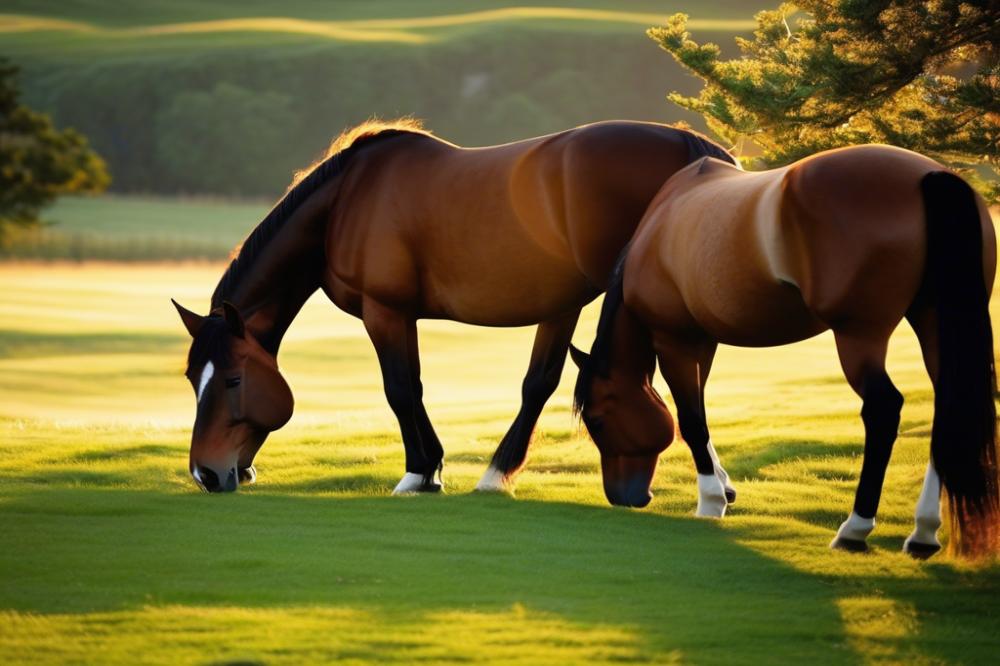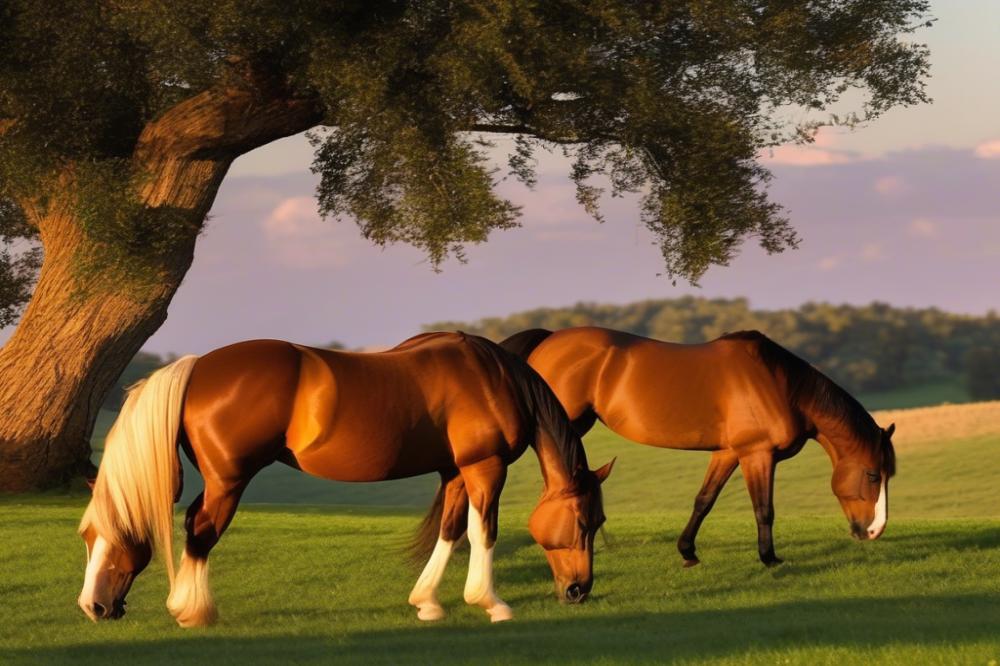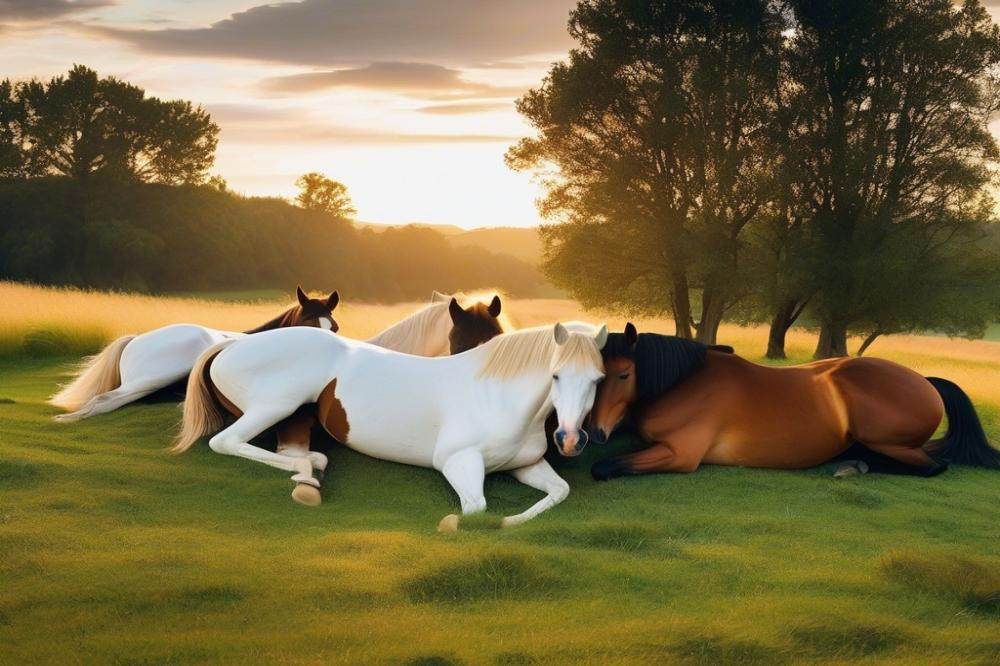Introduction
Understanding the intricacies of equine sleep is crucial for horse owners and enthusiasts. sleep patterns in horses differ significantly from human sleep, complicating our assumptions. Horses exhibit a fascinating combination of REM and non-REM sleep, taking place in short bursts throughout a 24-hour period. Factors such as environmental conditions and comfort levels play pivotal roles in how these majestic animals rest. Observations of their behaviors unveil intriguing truths about their natural instincts.
When considering horse behavior, it becomes clear that their instincts drive much of their resting patterns. A prey species, horses must remain alert to potential threats, even when they seek rest. This unique evolutionary background has equipped them with the ability to take short naps while standing. These moments of rest, often fleeting, showcase the adaptation that allows survival in the wild.
Additionally, horses enter a stage of deep sleep when they feel secure, usually laying down. This paradox highlights a profound need for safety in their habitat. Various studies have indicated that horses require specific conditions to achieve restorative sleep. As a result, the environment must be tailored to encourage relaxation and minimize disturbances. The ramifications of disrupted sleep can impact overall health and well-being.
In summary, the scientific understanding of how horses sleep enhances our perspective on their care. Recognizing signs of sleep deprivation can lead to better husbandry practices. An informed approach can vastly improve conditions for our equine friends, supporting their emotional and physical development. Through deeper investigation and respect for their innate behaviors, we can provide optimal environments conducive to their well-being. Explore more about the complexities of equine needs here and refine your understanding of equine life.
For those seeking to broaden their knowledge of horse behavior, dive into the research available here. The nuances of their sleep will undoubtedly reveal more than meets the eye.
equine sleep: Understanding Horse Behavior

Definition of Equine Sleep
When we talk about sleep in horses, it goes beyond mere rest. Like humans, their bodies require a reprieve to recharge. Horses, however, approach sleep differently. Their natural instincts shape this essential behavior, making them half-alert even while they snooze. This combination of vigilance and rest is crucial for them, especially in the wild where threats lurk around every corner.
Overview of Sleep Cycles in Horses
Horses experience distinct sleep cycles, similar to people. Each cycle consists of various properties that serve different functions. On average, a horse needs about 15 to 20 hours of sleep per day, but not all of it is spent in a deep slumber. They have short bursts of sleep, often interrupted, rather than long, uninterrupted nights. They can doze while standing, thanks to a specialized system that locks their legs. Isn’t that something? Still, lying down is necessary for complete relaxation, where they can dive deeper into slumber.
Differences Between REM sleep, Light Sleep, and Deep Sleep
There are three main stages in a horse’s sleep: REM, light, and deep sleep. Each phase plays a vital role in their overall well-being. REM sleep, or Rapid Eye Movement sleep, occurs when they are in a state of deep dreaming, allowing them to processing memories and experiences. As you might guess, this is when they are most vulnerable. Light sleep enables them to be aware of their environment while still gaining essential rest. Deep sleep, on the other hand, occurs when they are lying down, often letting their guard down completely. This phase is most restorative but is typically brief, as it takes a considerable amount of time to recharge.
Importance of Sleep Cycles for Horse Welfare
Understanding these sleep cycles is fundamental for horse care. Horses deprived of adequate rest may exhibit signs of stress or anxiety. Performance can falter, which is not ideal if you’ve got high expectations for your four-legged friend. Moreover, insufficient sleep can lead to health issues. If a horse does not engage in REM sleep long enough, you might see behavioral changes, resulting in an uptick in nervous energy or even aggressive tendencies. Thus, knowing when and how your horse sleeps helps in crafting a nurturing environment that caters to their unique needs.
Analyzing sleep patterns in Horses

Horses exhibit fascinating sleep patterns that differ considerably between their domesticated forms and their wild counterparts. Typically, a horse needs about 15 to 20 hours of rest per day, but how they achieve this rest can vary greatly. Wild horses often take short naps throughout the day and night, remaining vigilant for predators. In contrast, domesticated horses might have longer, uninterrupted sleep periods, depending on their environment and level of security.
Many factors influence the nocturnal habits of these animals. Environmental elements like light and noise levels play significant roles. For instance, a quiet pasture at dusk invites peaceful slumber, while a bustling barn with flickering lights can keep equines on edge. The management practices applied by caretakers also have an impact. Horses allowed freedom to roam may rest differently than those confined to stalls. When given the option, horses prefer to lie down for their deep, REM sleep, but anxiety or discomfort can interrupt this natural cycle.
Nocturnal Behavior in Horses
Equine behavior during the night can sometimes puzzle caretakers. Many horses are naturally crepuscular, meaning they are most active during dawn and dusk. This tendency can lead to mischief at night if they feel energetic. For someone in charge of their care, this can be quite the headache. Nighttime antics can include pacing, kicking, or even attempting to escape. Such activities are often fueled by insufficient stimulation during the day or lack of companionship.
Understanding these patterns is immensely helpful for owners. Providing environmental enrichment, such as toys or social interactions, can effectively minimize boredom. A tired horse is a happier horse—this is a mantra that many caretakers live by. Moreover, knowing when your horse prefers to sleep can prevent disruptions. It may save the caretaker from unwelcome surprises, like a horse trying to join the late-night party in the feed room!
In essence, the mysterious world of equine slumber holds vital clues for those who care for them. Recognizing the differences in sleep habits between wild and domesticated horses is not merely academic; it lays the groundwork for better management practices. By adjusting their environment and being mindful of these unique creatures’ nocturnal behaviors, caretakers can foster a healthier living space that supports restful sleep.
Horse Anatomy and Its Role in Sleep

Understanding how horses sleep requires a closer look at their unique physiology. Equine anatomy is engineered for survival. They possess a large, strong frame supported by long legs. This design allows them to flee predators quickly. During sleep, however, this anatomical structure influences how they rest.
Horses can achieve two distinct types of sleep: slow-wave sleep and REM sleep. Their skeletal structure plays a decisive role in the positions they adopt while sleeping. For instance, when a horse lies down, its limbs flex comfortably beneath it, allowing relaxation. Nevertheless, they prefer to sleep standing, a trait stemming from their evolutionary need to remain vigilant against threats.
Muscle groups play a part as well. The stay apparatus, a unique mechanism in their legs, allows horses to lock their joints while standing. This adaptation prevents them from collapsing, enabling brief moments of rest even while upright. Such an arrangement highlights the horse’s evolutionary quest for survival.
The Role of the Brain in Regulating Equine Sleep Cycles
The brain of a horse is quite fascinating. It orchestrates sleep cycles with remarkable precision. Regions in the equine brain regulate sleep stages. One crucial aspect is the connection between the brain and the nervous system, which manages the horse’s responses during slumber.
Think of it like a finely-tuned orchestra. The brain signals the body to relax muscles and slow heart rates during certain phases. However, when they enter REM sleep, horses exhibit more pronounced muscle relaxation. This stage is also crucial for memory retention and emotional processing.
Horses don’t achieve deep sleep without the aid of their complex brain function. Neural circuits activate, allowing the horse to drift into a deeper state, but only when they feel safe. In less secure environments, the likelihood of experiencing this depth of rest decreases significantly. Ever wonder why you rarely see horses sprawled out in the wild? Safety first!
Equine sleep is a dance between body and mind. Knowledge of their anatomy reveals how they prioritize alertness while managing the need for sleep. As prey animals, their instincts govern their rest, reflecting a fascinating blend of physiology and behavior.
Equine Health and Sleep
The quality of sleep significantly influences the overall health of horses. Just like humans, when a horse is deprived of restful slumber, its well-being can decline. A well-rested horse is often more energetic, focused, and less prone to diseases. Sleep isn’t a luxury; it’s a necessity. An adequate amount of rest aids in muscle recovery, cognitive function, and emotional stability.
Common Sleep Disorders in Horses
Much like people, horses can experience sleep disorders. One prevalent issue is REM sleep deprivation. Horses can have difficulty entering this deep sleep state, which can cause them to show signs of agitation or anxiety. Such behavior can manifest in various ways – from excessive pacing to even aggressive tendencies. Another concern is the phenomenon of “nightmares.” During episodes of stress, equines may exhibit unusual actions, leading to further disturbances in their sleep. Observing these behaviors is crucial for understanding their health and mood.
Strategies to Promote Better Sleep and Welfare
Horse owners can take several measures to encourage better sleep for their animals. First, creating a calm and safe environment is imperative. A quiet space with minimal distractions can make all the difference. Additionally, incorporating a routine can instill a sense of security. Regular feeding and exercise schedules help horses become accustomed to their surroundings. Another effective strategy is the use of calming agents, such as specific herbs or tailored nutritional supplements. These can promote relaxation and enhance sleep quality. Ensuring horses have access to comfortable bedding also supports restorative rest. After all, who doesn’t appreciate a cozy spot to curl up? A content horse is one that gets the rest it deserves, ultimately leading to improved overall health.
Horse Management Practices to Enhance Sleep
Best practices for managing sleep environments for horses
Maintaining an optimal sleep environment for horses is essential. Clean, comfortable bedding plays a crucial role in their ability to relax. Straw, shavings, or rubber mats can prevent discomfort. Drivers of good rest include minimal disturbances, so consider the placement of stalls. A quiet location tucked away from loud tractors or barking dogs helps create a serene space.
Ventilation is another aspect often overlooked. Proper air circulation ensures fresh oxygen flows while preventing excessive humidity. Flies and pests not only annoy but can also impede relaxation. Regular cleaning and use of appropriate safety products can lessen these interruptions.
Lighting conditions can affect rest as well. Horses often prefer dim lighting. Keeping barn lights low at night mimics natural conditions. This approach encourages them to take those all-important dreams. Reducing human foot traffic during late hours allows for uninterrupted snoozing.
Impact of social interactions on equine sleep patterns
Social dynamics significantly influence how horses sleep. Isolation can lead to increased stress levels. Horses are herd animals, craving companionship. Creating a social environment, when feasible, facilitates better rest.
Peer grooming and gentle nuzzles provide reassurance and comfort. On the flip side, too much ruckus from overly enthusiastic companions might disturb sleep cycles. Balancing social interactions is key. Thus, horse owners might choose to allow partial free turn-out at night when threats are minimal.
Regularly observing how they interact reveals a lot about their comfort levels. Some horses feel more secure near a trusted buddy. Others might prefer their own space. Tailoring arrangements to individual preferences can enhance their relaxation and calming factors.
Suggestions for horse owners to improve sleep hygiene
Horse owners can adopt several simple strategies to enhance sleep quality. Regularly observing horses during their rest can help gauge their sleep needs. Watching their patterns allows for early identification of disruptions.
Establishing a consistent routine is helpful. Sticking to feeding and turn-out times builds expectations within their daily lives. Consider creating a calm atmosphere during these periods. Playing soothing music or utilizing gentle scents like lavender might promote a relaxed state.
Providing enrichment when horses are awake also aids in better rest later. Interesting toys or novel objects in their environment can occupy their minds and alleviate boredom. Parlance may support emotional well-being, leading to deeper and more restorative slumbers.
Ultimately, every horse possesses distinct needs and preferences. Engaging with them on an individual basis leads to richer understanding. Observing changes and adapting accordingly can pave the way for a happier, healthier equine companion.
Understanding the Complexity of Equine Rest
The intricacies of a horse’s rest cycles can be astonishing. These animals exhibit a variety of behaviors that reveal their profound need for restorative periods. It is essential to recognize that the patterns of slumber extend beyond mere physiological necessity; they intertwine with emotional and environmental factors as well. While humans may find solace in long, uninterrupted nights, these creatures operate on a different schedule—one dictated by instinct and survival.
Observing a horse in a tranquil state can evoke vivid imagery. Picture a majestic creature, standing silently, perhaps with one leg raised, in a moment of light dozing. Such instances reflect a constant vigilance, a trait that has evolved throughout their existence. The division of their sleep into distinct phases showcases a fascinating adaptability, allowing them to draw strength even in brief intervals of repose. For instance, deep, restorative slumber is often punctuated with brief awakenings to assess their surroundings.
Research indicates that horses spend a significant portion of their day in a light state of relaxation. This atypical rhythm is complemented by critical periods of sleep patterns that promote physical recovery and cognitive health. The phenomenon of rapid eye movement, or REM sleep, is notably intriguing. During this stage, they exhibit vivid dreaming, a realm where past experiences may intermingle with instinctual behaviors.
Maintaining an appropriate environment plays an invaluable role. Factors such as comfort, safety, and social interaction contribute significantly to the quality of their rest. Owners must remain mindful of these elements to optimize their companion’s overall health. Establishing a suitable routine can lead to visible improvements in energy levels and overall demeanor.
In summary, comprehending the sleep patterns of these animals encourages a deeper appreciation for their needs. They are remarkable beings with intricate physiological mechanisms designed for survival. By understanding their unique requirements, caretakers can cultivate an environment that fosters rejuvenation. A more optimized state of restful slumber facilitates not only physical health but also emotional well-being.
For those passionate about animal health and behavior, embracing the educational journey awaits. Sign up today to explore more insights and deepen your understanding. Visit this link to embark on your journey!



